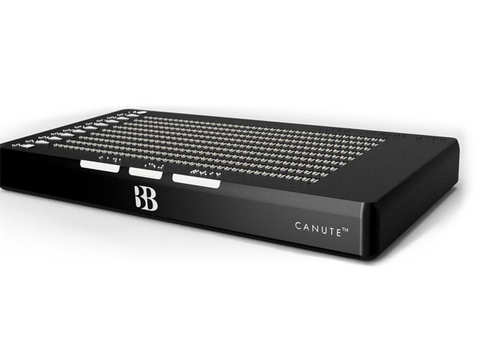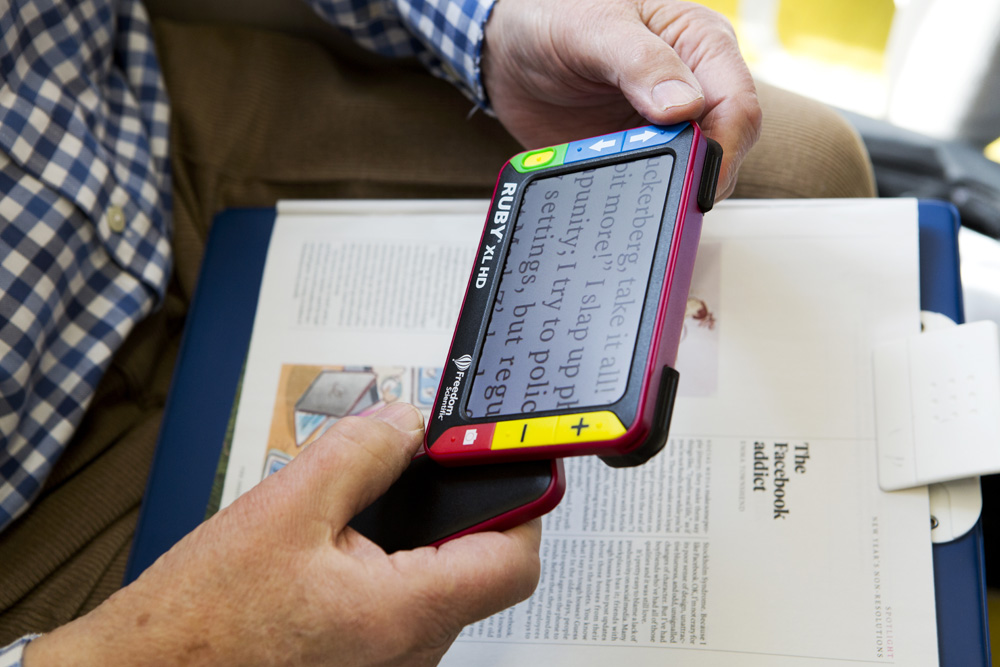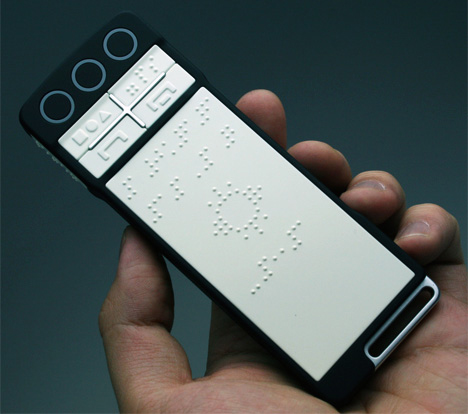Speech-to-Text Devices for Low Vision: Closing the Communication Gap
Speech-to-Text Devices for Low Vision: Closing the Communication Gap
Blog Article
Empowering Self-reliance With Assistive Modern Technology for the Blind
The combination of assistive innovation into the lives of individuals with visual problems represents a significant advancement in advertising freedom and self-sufficiency. From innovative display visitors to sophisticated clever walking sticks, these devices not just improve everyday navigation and communication but likewise empower customers to involve meaningfully in various facets of life. As we check out the myriad benefits and real-world applications of these modern technologies, it ends up being vital to examine the hidden elements that add to their efficiency and the potential for future growths in this important area.
Summary of Assistive Modern Technology

The development of assistive innovation is grounded in concepts of inclusivity and empowerment. Developments in software program, equipment, and sensory improvements supply individuals with options customized to their details requirements. From display viewers that transform message to speech, to tactile gadgets that convey details with touch, these tools change the method individuals involve with their surroundings.
Along with sensible applications, assistive technology fosters better social incorporation and engagement in various fields, consisting of education and employment (Speech-to-text devices for low vision). As research and development remain to develop, the possibility for assistive technology to additionally enhance the lives of visually impaired people stays encouraging, leading the way for an extra fair culture where every person can prosper
Sorts Of Assistive Gadgets
A variety of assistive devices have actually arised to support individuals with visual problems, each created to fulfill certain requirements and boost day-to-day functioning. These gadgets range from low-tech solutions to high-tech advancements, offering diverse alternatives for customers.
Low-tech gadgets include magnifiers and large-print materials that help in reading and writing. Braille devices, such as Braille styluses and slates, enable tactile analysis and interaction. Alignment and flexibility help, like white walking sticks, assist individuals navigate their setting safely.
On the higher end of the spectrum, electronic zoom systems and screen readers supply substantial assistance. Electronic magnifiers allow customers to increase the size of message and photos on screens, while screen readers transform electronic material into manufactured speech, facilitating access to information on mobile phones and computers.
Mobile phone applications likewise play an essential duty, giving attributes like text acknowledgment and navigating support. Wearable innovation, such as smart glasses outfitted with enhanced truth, is becoming a promising device to enhance situational recognition.
Advantages of Assistive Modern Technology
The assimilation of assistive modern technology considerably boosts the top quality of life for individuals with visual problems. These innovations empower users by promoting independence, allowing them to navigate their atmospheres much more effectively and execute everyday jobs with greater convenience. For instance, display viewers and magnifying software enable individuals to accessibility digital info, promoting expert and educational possibilities that might have previously been out of reach.
Moreover, assistive devices such as smart walking sticks and GPS applications supply real-time navigating support, boosting mobility and security. This increased freedom not only improves self-esteem but likewise urges social interaction, enabling individuals to take part more fully in their areas.
Assistive innovation likewise promotes communication, helping individuals get in touch with others with voice acknowledgment and text-to-speech applications. This ability is crucial for preserving partnerships and accessing crucial info.
Furthermore, the customization options available with numerous assistive technologies ensure that users can customize tools to their specific requirements, better enhancing functionality and performance. On the whole, the advantages of assistive modern technology for people with visual disabilities are profound, promoting a more comprehensive society where every person can pursue their desires and goals.
Situation Researches and Success Stories
Highlighting the transformative effect of assistive technology, countless situation researches show just how individuals with aesthetic impairments have actually successfully incorporated these tools into their day-to-days live. One compelling example involves an university trainee that made use of my website screen reading software to navigate academic materials and online sources successfully. This innovation not just promoted her education and learning however additionally boosted her confidence in joining conversations and group jobs.
Another study includes an expert who uses a smartphone application developed for navigating and object acknowledgment. By utilizing this app, he has actually restored autonomy in both his individual and job environments, allowing him to commute independently and engage with associates a lot more efficiently.
Additionally, a retired person shared her experience with braille e-readers, which allowed her to access a vast selection of literature and remain gotten in touch with her neighborhood through publication clubs.
These success tales highlight the important function of assistive innovation in promoting self-reliance, enhancing quality of life, and advertising social assimilation for individuals with visual disabilities (Speech-to-text devices for low vision). By embracing these innovative devices, users can get rid of challenges and seize opportunities that add to their individual and professional satisfaction

Future Fads in Assistive Modern Technology
Development in assistive modern technology is positioned to redefine the landscape of assistance for individuals with aesthetic impairments. Emerging trends stress the this post combination of artificial intelligence (AI) and device learning, which enhance the capability of tools that aid with navigating and info ease of access. For example, AI-driven applications are currently capable of translating aesthetic information in real-time, enabling customers to engage with their environment extra independently.
Moreover, the growth of wearable innovation is progressing swiftly. Smart glasses geared up with increased fact (AR) can provide audio descriptions of surroundings, transforming how customers connect with public spaces. These tools not just advertise freedom yet likewise foster social incorporation.
In Addition, the Net of Things (IoT) is making homes smarter, enabling smooth connection between assistive gadgets and everyday devices. This connectivity empowers customers by enabling automatic reactions and voice-activated controls tailored to specific demands.
Final Thought
To conclude, assistive innovation plays an essential role in encouraging individuals with aesthetic disabilities by enhancing their self-reliance and involvement with their surroundings. The diverse array of applications and gadgets offered not only helps with navigating and communication but additionally advertises social assimilation and opportunities for individual and expert development. As have a peek at this site innovations continue in this area, the potential for boosting the lifestyle for those with aesthetic disabilities will broaden, promoting higher autonomy and empowerment.

Report this page